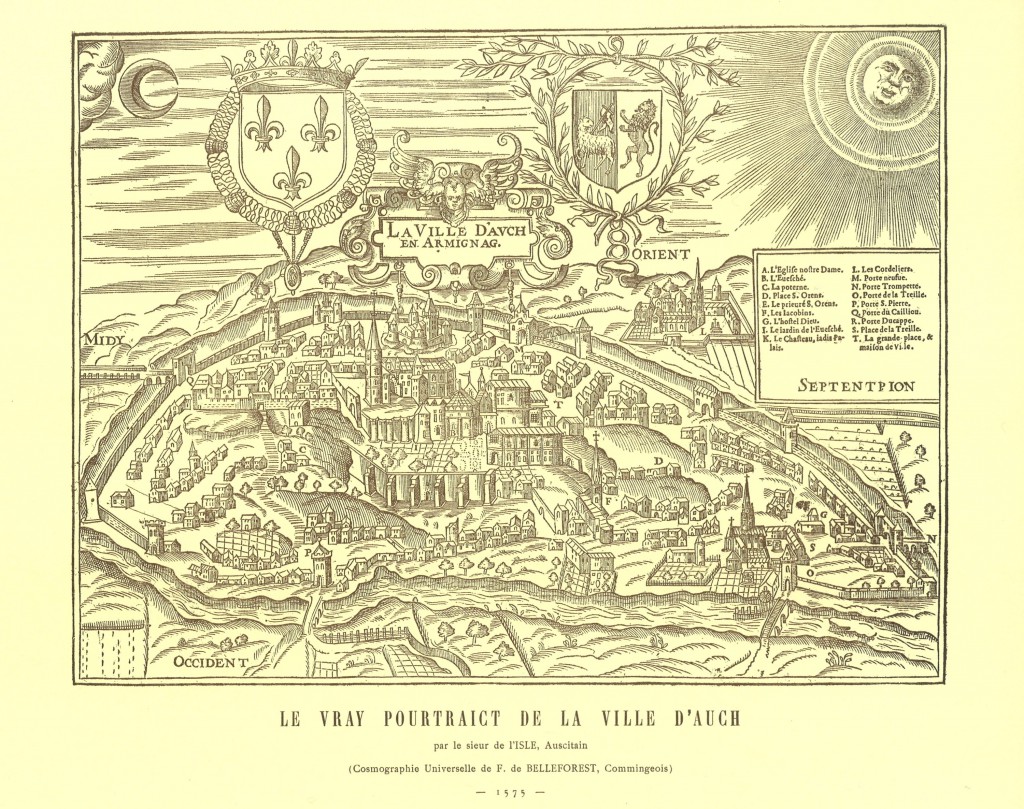This plan is the oldest known plan of the city of Auch. We end our series of 3 articles to tell you about this exceptional document: its origin, the portrait it traces of the city in the XNUMXth century and the way in which it bears witness to the history of the city. These articles have been prepared with the indispensable contribution of Mr. Gilbert Sourbadère.

Part 3: An exceptional testimony to the history of the city
The medieval town of Auch presented by Belleforest succeeded the ancient Gallo-Roman city Augusta Auscorum abandoned around the XNUMXth and XNUMXth centuries. This city, dedicated to Emperor Augustus (a very rare occurrence in the Roman Empire), was already at a crossroads between north-south axes: Agen - Saint Bertrand de Comminges, and east-west: Toulouse - Eauze, then named Elusa, capital of the Roman province Novempopulanie.
Auch becomes archbishopric in the 840th century. following the looting of Eauze by the Normans in XNUMX.
A double guardianship
The installation of the archbishopric structured the city which developed from the XNUMXth to the XNUMXth century. under the double supervision of Counts of Armagnac (who succeeded the Fezensacs) and the Bishop.
The Bishop developed the city around the Cathedral and the Episcopal Palace (current Prefecture) while the Count founded around 1070-1095 a castlenau around the castle (landmark K) which stood opposite the site of the current Town Hall.
The rue Camarade (Spain street today) separated these two parts of the city and anyone carrying goods had to pay a tax.
The coat of arms of Auch

The coat of arms of Auch, on the right above the map, testifies to this double identity as confirmed by this description. heraldry :
“Party, to the first Gules a paschal lamb Argent, the head circumvented, carrying a bannerette Azure charged with a cross also Argent, the shaft of the same placed in a bar, the second Argent to the lion Gules armed Sable. ”
On the left, the lamb represents the religious authority of the Bishop, the lion, on the right, representing the authority of the Counts.
It is thanks to the demographic expansion of the 4th, XNUMXth and XNUMXth centuries. that the XNUMX suburbs, also called “barris” (districts), developed outside the walls.
It was then necessary to protect them by the construction of the second enclosure with its 11 gates, itself preceded by a large ditch about 8 meters wide and as deep.
Finally, we can clearly distinguish the different churches and convents: Saint-Orens, the Jacobins convent and outside the fortifications, the Cordeliers Convent.

 "/>
"/>